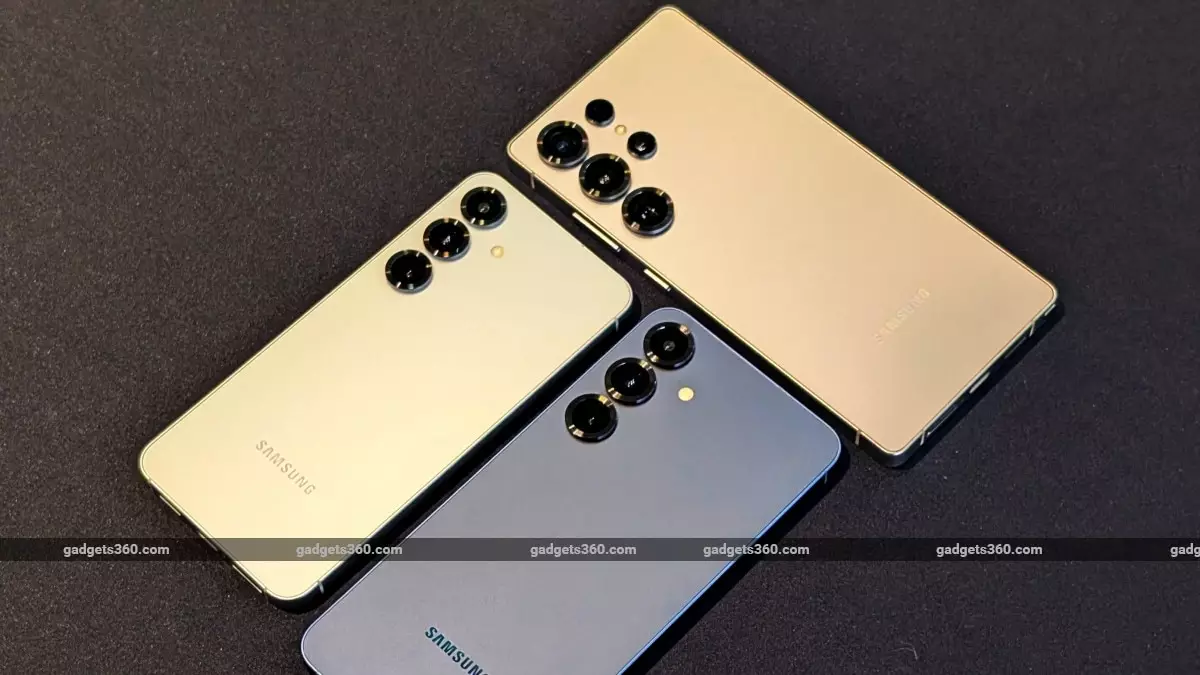In a significant announcement earlier this week, Samsung unveiled its latest flagship smartphones: the Galaxy S25, S25+, and S25 Ultra. These devices not only showcase cutting-edge hardware but also come packed with impressive software enhancements. One of the standout features introduced is satellite connectivity, a promising advancement for users who require reliable communication in remote areas. However, perhaps the most substantial update lies in the implementation of seamless updates—a long-awaited improvement that elevates the user experience.
Seamless Updates: A Game-Changer
Historically, the process of installing software updates on smartphones has often resulted in downtime, where users are left waiting for their devices to reboot and finalize installations. The Galaxy S25 series attempts to mitigate this inconvenience significantly. With the ability to install updates while the device remains operational, Samsung is addressing a long-standing issue faced by smartphone users. This new feature, which first appeared in Google’s Android ecosystem, had become a missing piece in Samsung’s software strategy—until now.
Samsung’s Galaxy S25 models mark the first in the S series to fully adopt support for seamless updates. While other manufacturers embraced this feature sooner, Samsung’s late entry to the seamless updates arena came with its own risks. The technology was introduced by Google almost a decade ago, so Samsung’s first stab at it—last year’s Galaxy A55 5G—was only a precursor to these flagship models.
Understanding the Update Mechanism
The seamless updates feature in the Galaxy S25 lineup utilizes a method that is modern yet not without limitations. Unlike the older A/B partition style that would duplicate system files, the S25 series operates on the more efficient non-A/B seamless update mechanism, which was refined with Android 11’s release. This updated model allows for reduced storage usage while still providing the essential ability to install updates without significant downtime. Users can expect a smoother experience; after all, no one enjoys staring at a screen waiting for software to install.
However, it’s important to note that as of this launch, Samsung has not incorporated the older A/B version of seamless updates, which could have provided an even more robust system for managing updates. Android expert Mishaal Rahman has highlighted this distinction, emphasizing that while the non-A/B system is less demanding on storage, it could also limit certain capabilities that users might find beneficial.
The introduction of seamless updates stands to enhance the usability of Samsung’s flagship devices, making the transition between software versions virtually transparent for the user. For those weary of waiting through long update processes, the S25, S25+, and S25 Ultra offer a beacon of hope, representing a shift toward a more user-centric approach in smartphone technology. As Samsung continues to innovate and expand its features, the Galaxy S25 series sets a notable precedent for what future Android devices could deliver in terms of efficiency and service. Thus, while Samsung may have taken its time in adopting this feature, it is now a leader in ensuring an excellent user experience—a trend that is sure to resonate with consumers worldwide.

